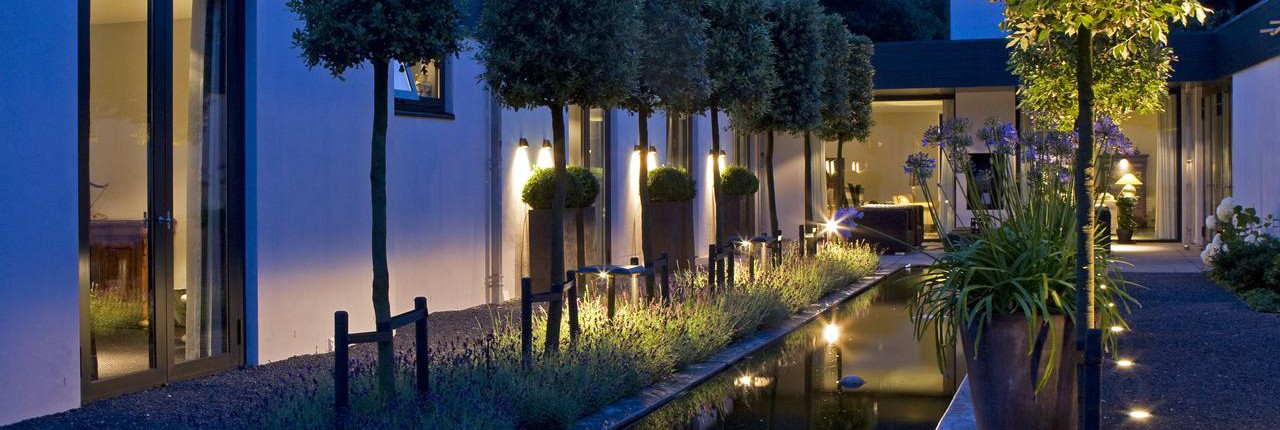Positioning three or more equidistant objects within a space creates order. This order is subconsciously recognised as a rhythm. A rhythm gives direction and decides the proportions of the landscape design.
When designing a garden, Martin Veltkamp allows the rhythm to play a role (without letting it become dominant), by positioning identical objects in a line.
Creating order this way provides a sense of direction. Placing a few planters with olives next to one another, for example, the garden will come across as wider than it is. Placing oversized elements also enhances the order. By making objects larger than necessary, they are easier to recognise. Large plants or planters placed in a slightly smaller space can also make the garden look bigger than it actually is. Using elements that are clearly oversized results in a splendid sense of grandeur.
Rhythm can also emphasise the length of the garden. Martin Veltkamp knows exactly how to use a row of trees – in the formation of a lane – to provide a powerful impact for a small garden. With this design, he creates incredible optical depth in the landscape design. Other objects, such as lighting ornaments, are also arranged rhythmically and serve to emphasise the lines. A single light can serve a practical purpose, while positioning a certain number of the same lights can provide atmosphere by creating rhythm and direction.

